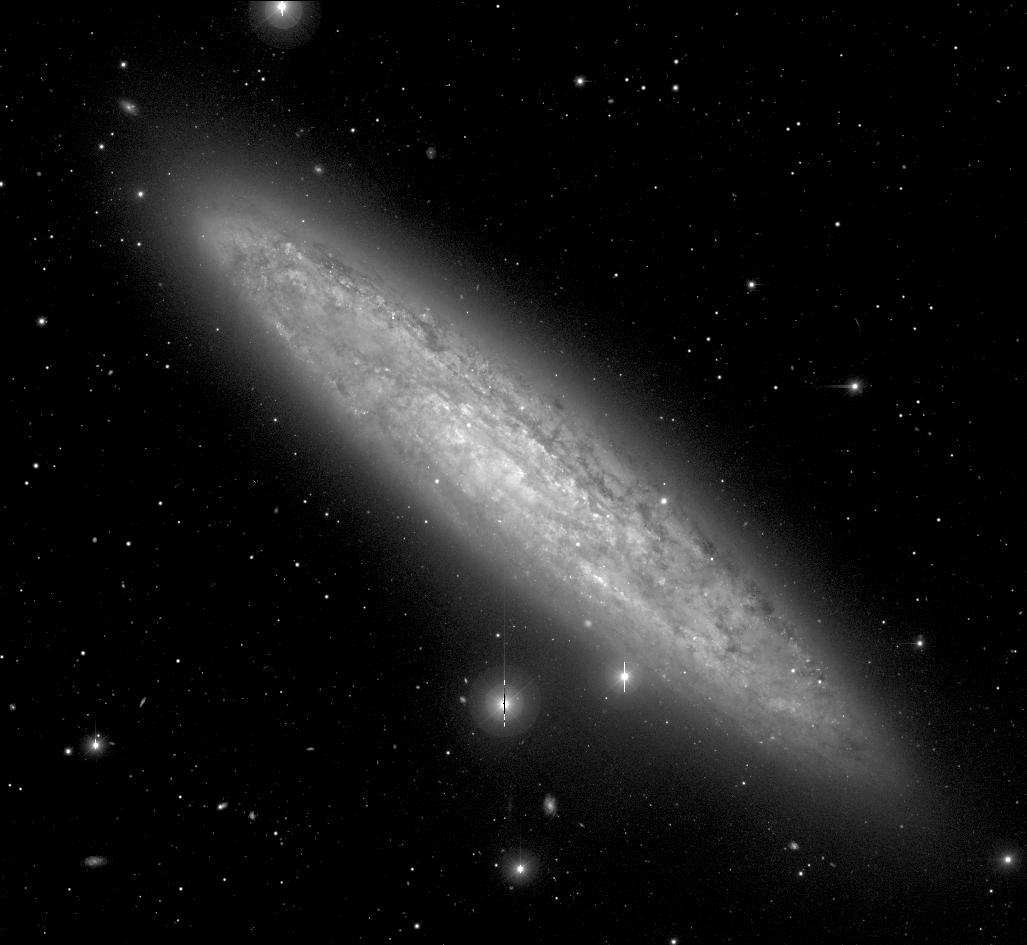

De Vaucouleurs Atlas Type: SAB(s)c
Filter: B
Telescope: CFHT
North up , East left
Field Dimensions: 28.3 x 25.9 arcminutes
RC3 Type: SAB(s)c
RSA Type: Sc(s)
Surface Brightness Range Displayed: 19.0-26.0 mag per square arcsec
Absolute Blue Magnitude: -21.4
De Vaucouleurs Atlas Description:
The morphology of NGC 253 , the most luminous member of the nearby Sculptor Group , is dominated by a patchy distribution of dust clouds and a weak global spiral pattern. In spite of the high inclination , de Vaucouleurs suspected long ago that the galaxy is barred. This was inferred from the way the inner spiral structure seemed to break away from the center at a large angle. The (s) classification was adopted because no clear ring was discernible in blue light. However, the blue light image shows an extreme and complex dust distribution that is clearly heavily masking the true morphology. In the 2MASS K-band (2.2 microns) image, where the effects of extinction are greatly reduced, a clear bar and inner ring morphology emerges (Jarrett et al. 2003). This galaxy is one of those cases where the morphology changes drastically from B to K. The K-band morphology is SB(r)bc.
The Sc classification in blue light is based on the very small core and the extreme patchiness and dustiness of the disk. The dusty part of the disk has a limited extent, however, and the outer regions reveal a very smooth and bright underlying disk component. The V-I color index map shows the color distribution of the inner section only, and reveals a very red, elongated central area.
NGC 253 has been the subject of many detailed studies, including basic photometry and kinematics (Pence 1980). Most studies have focussed on the emission and dynamics of the starburst nucleus (e.g., Paglione et al. 2004), whose presence may be connected to the strong apparent bar.